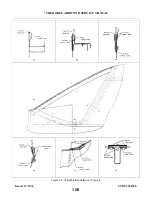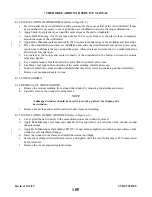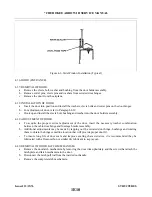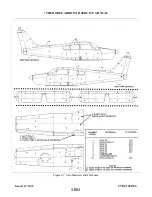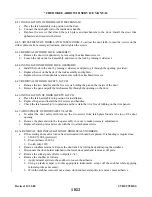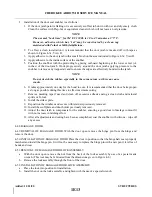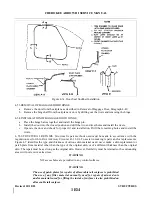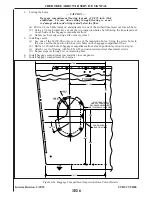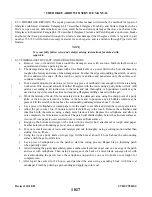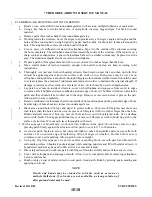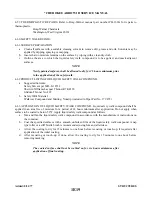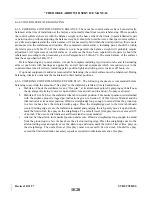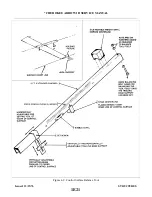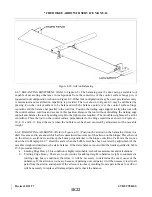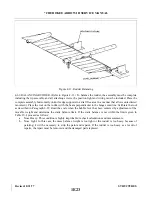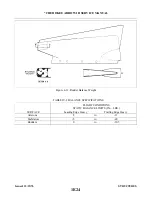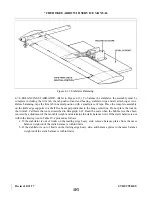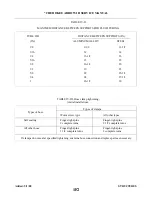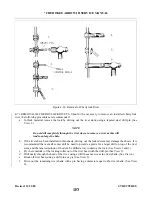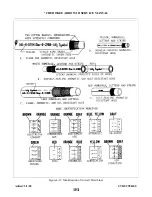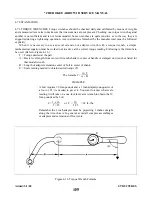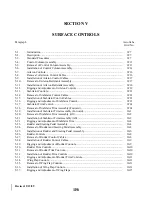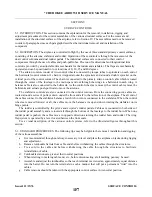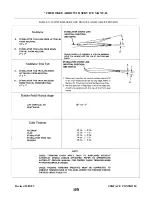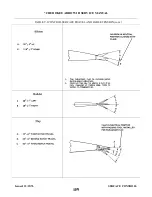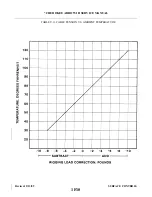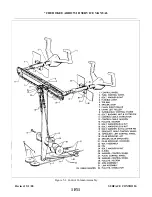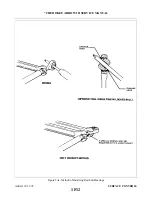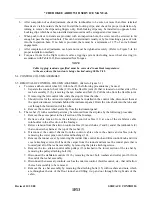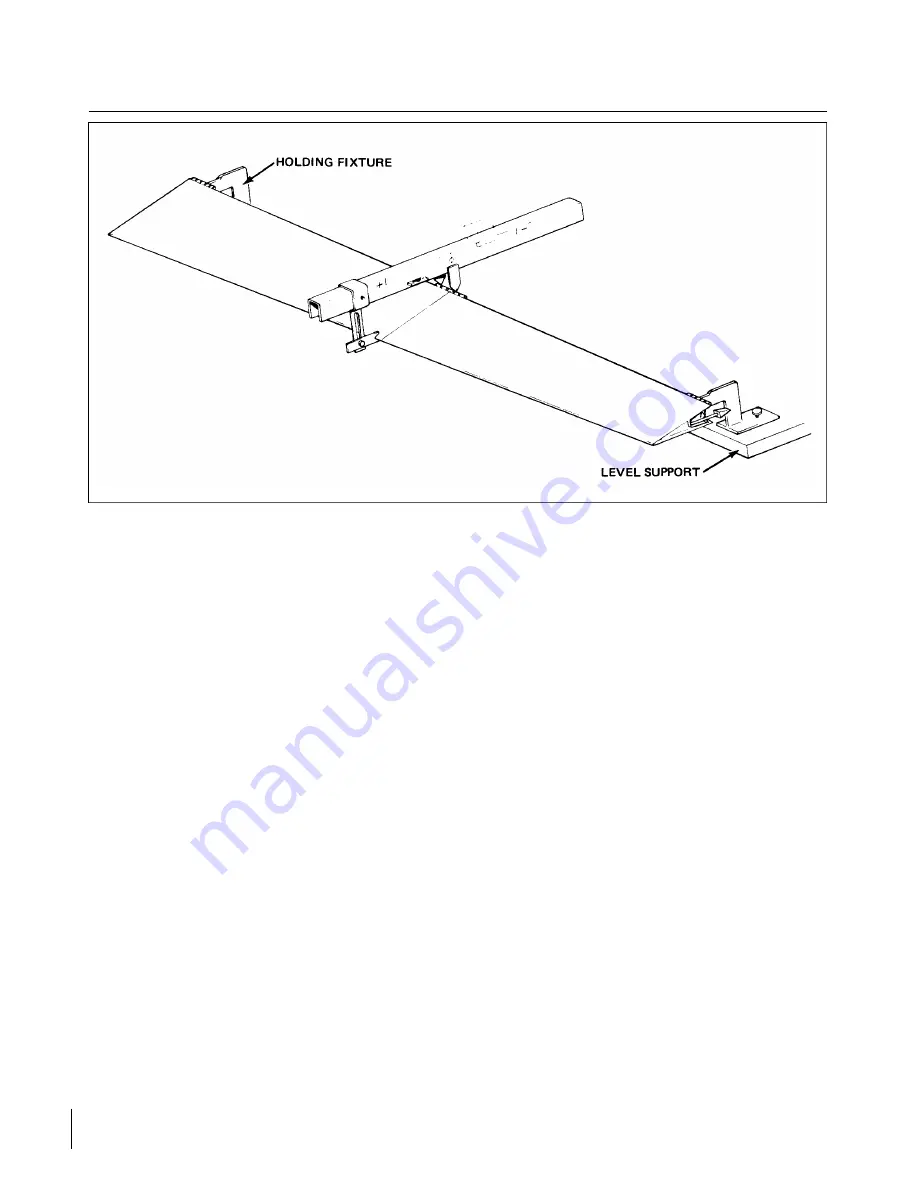
Figure 4-10. Aileron Balancing
4-67. BALANCING EQUIPMENT. (Refer to Figure 4-9.) The balancing must be done using a suitable tool
capable of measuring unbalance in inch-pounds from the centerline of the control surface hinge pin. A
suggested tool configuration is shown in Figure 4-9. Other tool configurations may be used, provided accuracy
is maintained and recalibration capability is provided. The tool shown in Figure 4-9 may be calibrated by
placing it on the control surface to be balanced with the balance points over the control surface hinge
centerline and the balance bar parallel to the cord line. Position the trailing edge support to align the tool with
the control surface cord line and secure in this position. Remove the tool without disturbing the trailing edge
support and balance the tool by adding weight to the light end as required. (The movable weight must be at the
centerline.) Place the tool on the control surface perpendicular to the hinge centerline as shown in Figures 4-
10, 4-11 and 4-13. Read the scale when the bubble level has been centered by adjustment of the movable
weight.
4-68. BALANCING AILERONS. (Refer to Figure 4-10.) Position the aileron on the balancing fixture in a
draft free area and in a manner which allows unrestricted movement of the aileron on the hinges. Place the tool
on the aileron, avoid rivets and keep the beam perpendicular to the hinge centerline. Calibrate the tool as
described in Paragraph 4-67. Read the scale when the bubble level has been centered by adjustment of the
movable weight and determine the static balance. If the static balance is not within the limits specified in Table
IV-I, proceed as follows:
a.
Leading Edge Heavy: This condition is highly improbable; recheck measurements and calculations.
b. Trailing Edge Heavy: There are no provisions for adding weight to balance weight to counteract a
trailing edge heavy condition; therefore, it will be necessary to determine the exact cause of the
unbalance. If the aileron is too heavy because of painting over old paint, it will be necessary to strip all
paint from the aileron and repaint. If the aileron is too heavy resulting from repair to the skin or ribs, it
will be necessary to replace all damaged parts and recheck the balance.
Revised: 8/31/77
1E22
* CHEROKEE ARROW III SERVICE MANUAL
STRUCTURES
Summary of Contents for ARROW III
Page 4: ...THIS PAGE INTENTIONALLY LEFT BLANK 1A4...
Page 12: ...THIS PAGE INTENTIONALLY LEFT BLANK 1A12...
Page 94: ...Figure 4 2 Wing Installation Revised 2 13 89 1D22 CHEROKEE ARROW III SERVICE MANUAL STRUCTURES...
Page 171: ...lH3 INTENTIONALLY LEFT BLANK...
Page 172: ...lH4 INTENTIONALLY LEFT BLANK...
Page 286: ...THIS PAGE INTENTIONALLY LEFT BLANK Revised 2 13 89 2A8...
Page 528: ...INTENTIONALLY LEFT BLANK 2K10 THRU 2L24 2K10...

